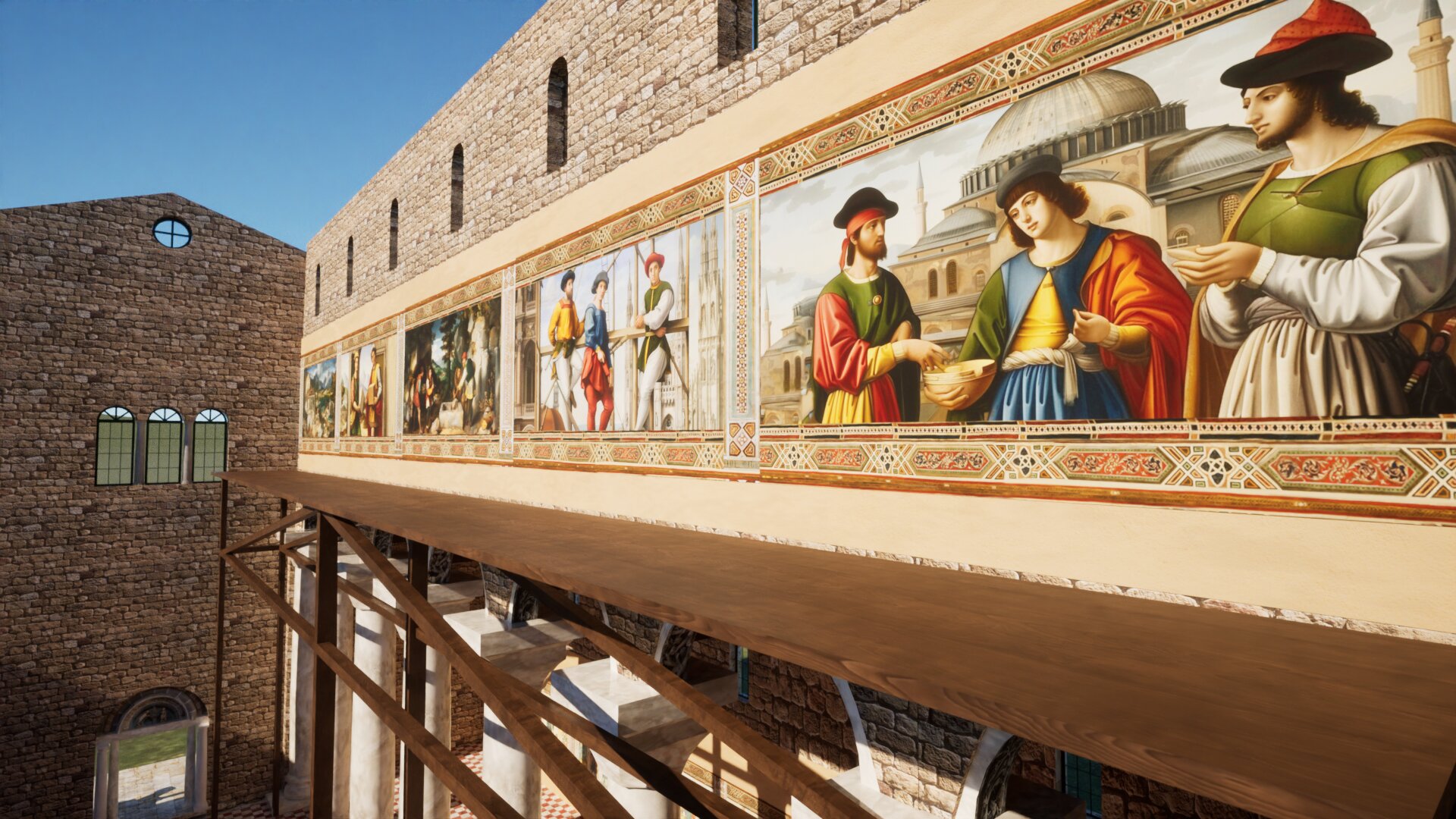Video Abstract
Local art and history, often enshrined in museums, churches, and historic homes, can be regenerated by Artificial Intelligence. Thanks to the “Regenerative Arts” techno-methodology, the style of artists of the past is reactivated to recreate unprecedented scenes. “Regenerative Arts” consists of a rigorous approach for “regenerative” (not simply “generative”) artificial intelligence. In essence that form of AI applied to works of art from the past that are “regenerated” through the reworking of historical artistic forms and syntax. The explicit role of original sources is crucial here, unlike in conventional GenAI, which conceals sources. Through data ingestion (the process of automatically extracting, structuring, storing, and transferring data), an artwork can be imported into the generative process, and become its pivot. The prompt is the sequence of instructions provided by the author that then shapes the visual generation by redefining the semantic and aesthetic characteristics. The generated image can then be modified as a whole or in its parts that are not deemed suitable for our purposes. This creative process is rapidly evolving as technology is rapidly perfecting itself, offering authors ever greater customization capabilities. Regenerative Arts brings to life a new artistic trend by harnessing the ability of artificial intelligence to create images from past works, which AI has ample access to in the immense archives with which it has been trained. While unprecedented in scale and creative possibilities, this attitude has very important precedents: it has also been a central challenge for fundamental moments in art, such as the Renaissance, the Baroque, Neoclassicism, nineteenth-century historicism, the twentieth century, and postmodernism. It is an intellectual game in which the artist reworks the art of the past. In our case, it is crucial that the works regenerated by artificial intelligence are recognizable. The Regenerative Arts label identifies images created by this methodology applied to artificial intelligence, distinguishing them from the originals. In this way, the artificial nature of the generated image is explicit. Like Mantegna, Leon Battista Alberti, Michelangelo, Raphael, Palladio, Bernini, Canova, and the postmodernists, “regenerative” artists rework the past in new forms, with new narratives, new goals.

“Regenerative Arts” methodology.
The image is released under a Creative Commons Attribution 4.0 International (CC BY 4.0) license. Work by Gualtiero and Roberto Carraro – Homo Extensus. Please quote the authors and link to the original page


